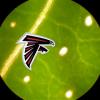Hello, I have a question that I didn't see in the forums or in the SQF GUIDANCE:
We are using a water activity meter to test water activity of ingredients and products. We have been doing proficiency testing for water activity by splitting a sample and testing part in-house for water activity and sending part to a third-party laboratory and comparing the results from the two.
The part I don't understand is about comparing results. For example, one dried botanical (cut & sifted, i.e., pieces about 6 mm long) has in-house and third-party water activity results of 0.60 and 0.474, respectively. What acceptance criteria should we be using, e.g., a maximum relative standard deviation (RSD) percentage? These results seem quite far apart, but I have a difficult time finding acceptance criteria for such proficiency testing.
We manufacture dietary supplements in the United States, are compliant with 21 CFR Parts 111 and 117, and have an SQF Edition 9 certification. We have already read the SQF guidance for proficiency testing, and this type of detail is not in the guidance.
Thank you,
Matthew














